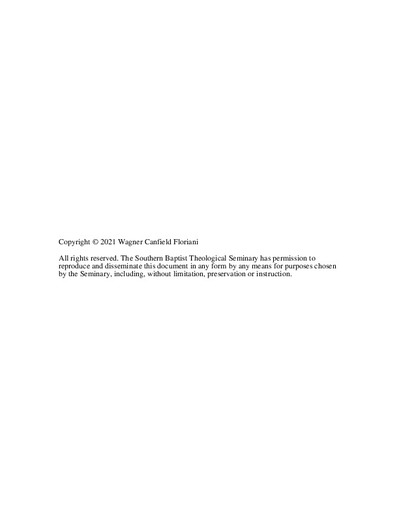| dc.contributor.advisor | Claunch, Kyle D. | |
| dc.contributor.author | Floriani, Wagner Canfield | |
| dc.date.accessioned | 2022-01-04T19:13:00Z | |
| dc.date.available | 2022-01-04T19:13:00Z | |
| dc.date.issued | 2021-11-27 | |
| dc.identifier.uri | https://hdl.handle.net/10392/6691 | |
| dc.description.abstract | In the classical Christian tradition, personhood is a concept employed to distinguish the members in the Trinity while simultaneously affirming their oneness of being. Yet, this is a term applied to both human beings and God. At minimum a person is a being that exists in defined relations. However, being, essence, or nature, necessarily qualify one’s personhood, and should be explained congruently. This preserves creature and Creator distinctions as this anthropological and trinitarian loci intersects. This project aims to explore the classical arguments that employed personhood language to explain the Trinity and seeks to carefully expand the concept’s application to human beings. It will contend that personhood be first understood in reference to God’s nature, and secondly to man in reference to his created nature. Lastly, this project will demonstrate that an alternative application of personhood conflates the relationship between person and being. It will conclude that this error impoverishes a definition of God or men as unique persons and diminishes the significance of the two-natured person of Christ. | en_US |
| dc.subject.lcsh | Trinity | en_US |
| dc.subject.lcsh | Theological anthropology--Christianity | en_US |
| dc.subject.lcsh | Essentialism (Philosophy) | en_US |
| dc.subject.lcsh | Human body--Religious aspects--Christianity | en_US |
| dc.title | Persons According to Essence | en_US |
| dc.type | Electronic thesis | en_US |
| dc.type | Text | |
| dc.type.qualificationname | Th.M. | en_US |
| dc.publisher.institution | Southern Baptist Theological Seminary | en_US |
| dc.publisher.department | School of Theology | |

